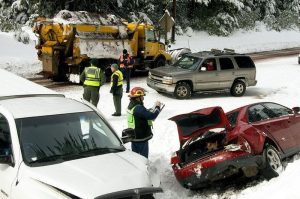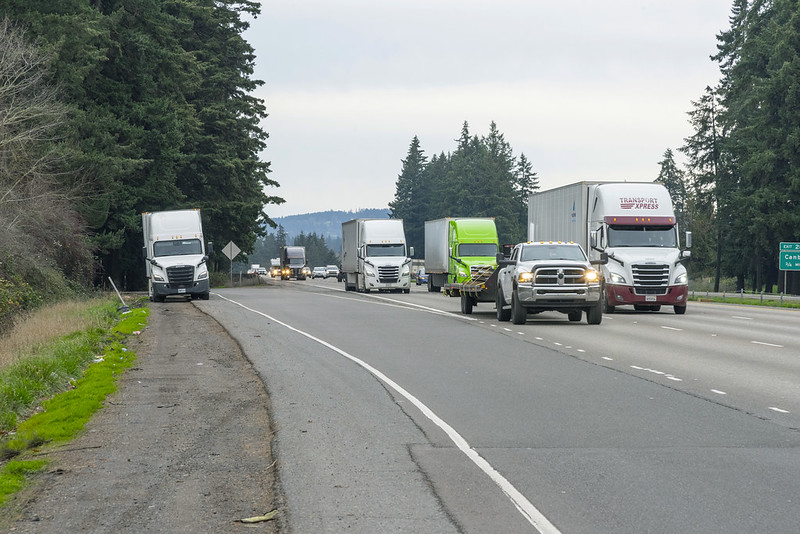 Courtesy of Oregon DOT, Flickr, CC BY 2.0
Courtesy of Oregon DOT, Flickr, CC BY 2.0This article is partially derived and excerpted from Successful Approaches for Facilitating Truck Parking Accommodations Along Major Freight Corridors, the final report of National Cooperative Highway Research Program (NCHRP) Project 20-68A, Scan 20-02.
Across the United States, demand for commercial-truck parking along major freight corridors routinely exceeds capacity at many state-provided safety rest areas and weigh stations. Lacking reliable options for safely taking rest periods when they are tired or legally required to do so, truck drivers may resort to parking on highway ramps, shoulders, or other unsafe areas. This can create hazardous situations for themselves and other road users.
The unreliability of available space that promotes such unsafe makeshift parking can also result in costly consequences for state departments of transportation (DOTs). Challenges include dealing with
- Potentially dangerous conditions on highways,
- Fatigued drivers who are not safe to be on the road,
- Pavement damage to roadways not designed for truck parking, and
- Additional refuse collection.
Jason’s Law
Passed by Congress in 2012, Jason’s Law requires the U.S. Department of Transportation to conduct periodic surveys of commercial truck parking spaces available nationwide. It is named for truck driver Jason Rivenburg, who—after finding no adequate parking alternatives—was robbed and killed for $7 when he parked at an abandoned gas station near his delivery location in 2009.
Providing safe truck parking remains a critical—and widespread—freight issue facing state transportation agencies. In an FHWA survey of states conducted as part of a federal effort that addresses the truck parking shortage (known as Jason’s Law), 36 state DOTs (72 percent) responded that they have a problem with commercial vehicle truck parking. Nearly 59 percent noted problems in public rest areas, and more than 45 percent had issues on freeway ramps and shoulders. Among the concerns respondents identified as important was the ability to share information with drivers about where parking is available (1).
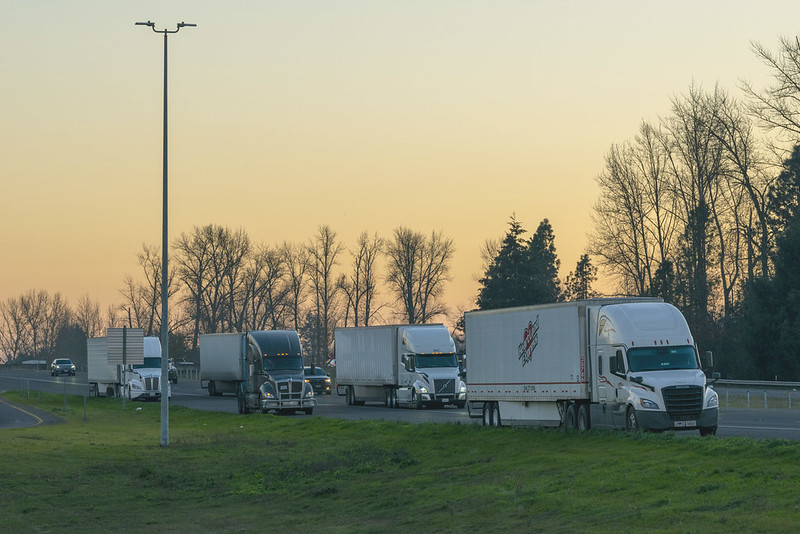 Courtesy of Oregon DOT, Flickr, CC BY 2.0
Courtesy of Oregon DOT, Flickr, CC BY 2.0Truckers have similar concerns. In a 2016 survey of truck drivers by the Washington State DOT, 61 percent stated they regularly or frequently drive fatigued because of inadequate parking, while 60 percent reported spending one hour or more each day looking for parking (2). Similar results probably would be found in states across the nation, suggesting the need for a better understanding of the process for developing a truck-parking information system.
Truck parking photographs, except where indicated, courtesy of Oregon DOT, Flickr, CC BY 2.0
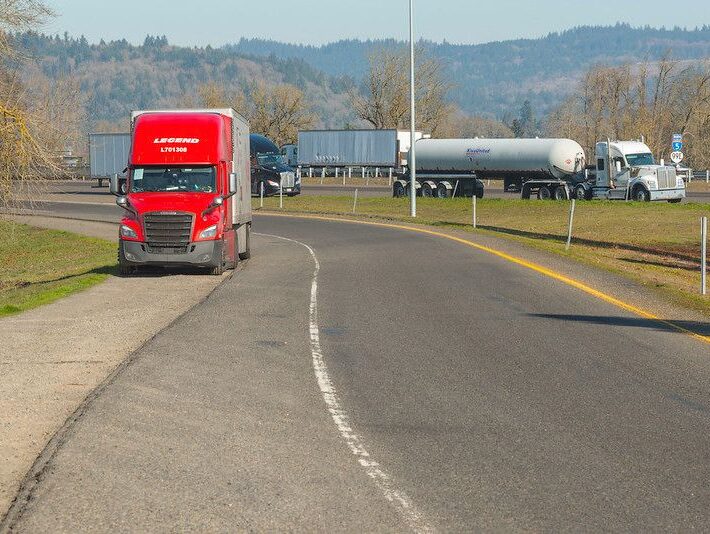 Courtesy of Oregon DOT, Flickr, CC BY 2.0Trucks park on the road and offramp shoulder at the Santiam Rest Area on I-5 in Jefferson, Oregon.
Courtesy of Oregon DOT, Flickr, CC BY 2.0Trucks park on the road and offramp shoulder at the Santiam Rest Area on I-5 in Jefferson, Oregon.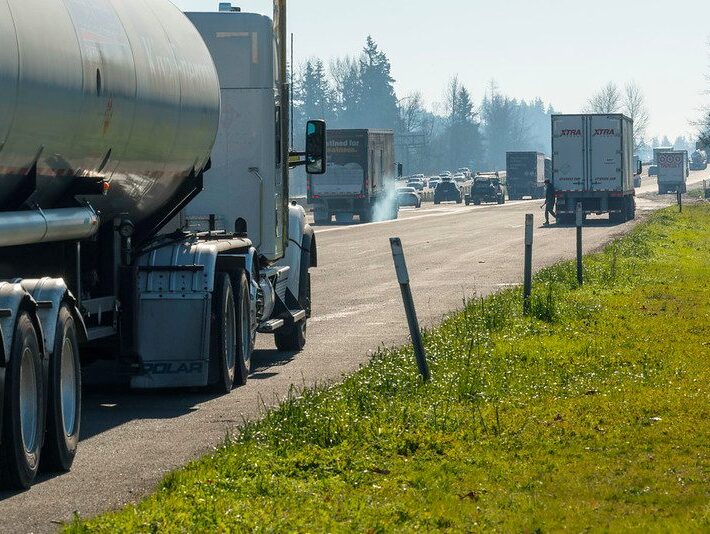 Courtesy of Oregon DOT, Flickr, CC BY 2.0Trucks park on an Oregon freeway shoulder.
Courtesy of Oregon DOT, Flickr, CC BY 2.0Trucks park on an Oregon freeway shoulder.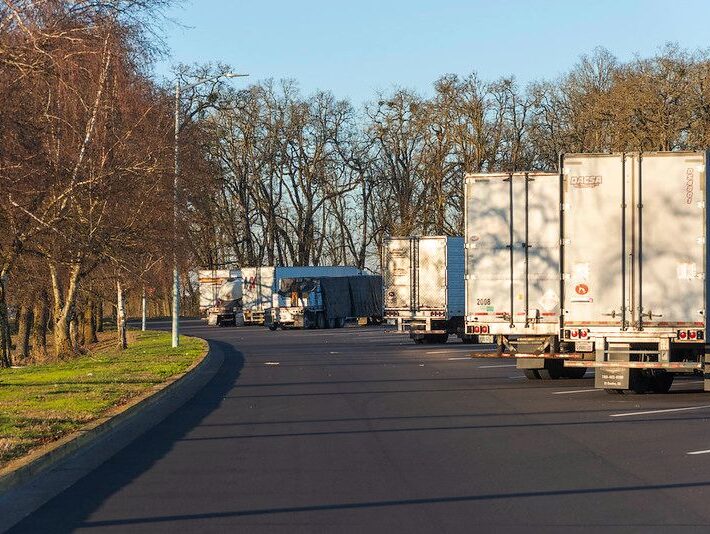 Courtesy of Oregon DOT, Flickr, CC BY 2.0Maneuverability may be tight for trucks parked in the northbound Oak Grove Rest Area on I-5 near Harrisburg, Oregon.
Courtesy of Oregon DOT, Flickr, CC BY 2.0Maneuverability may be tight for trucks parked in the northbound Oak Grove Rest Area on I-5 near Harrisburg, Oregon.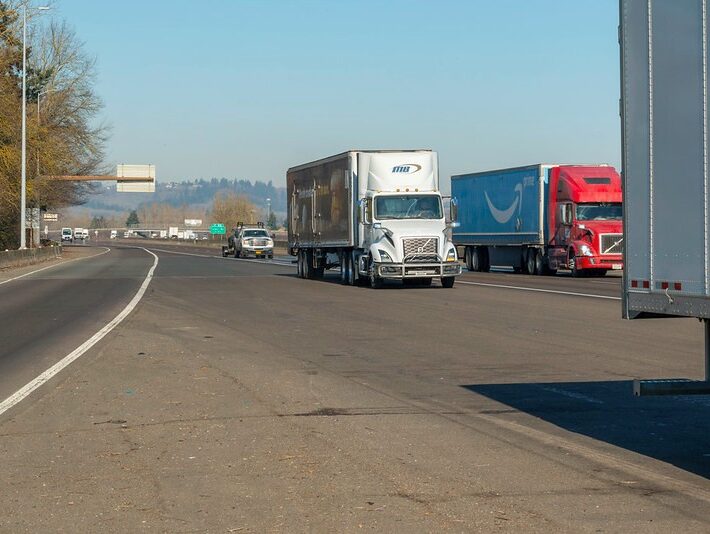 Courtesy of Oregon DOT, Flickr, CC BY 2.0Trucks park between the ramp and I-5 at the Santiam Rest Area in Jefferson, Oregon.
Courtesy of Oregon DOT, Flickr, CC BY 2.0Trucks park between the ramp and I-5 at the Santiam Rest Area in Jefferson, Oregon.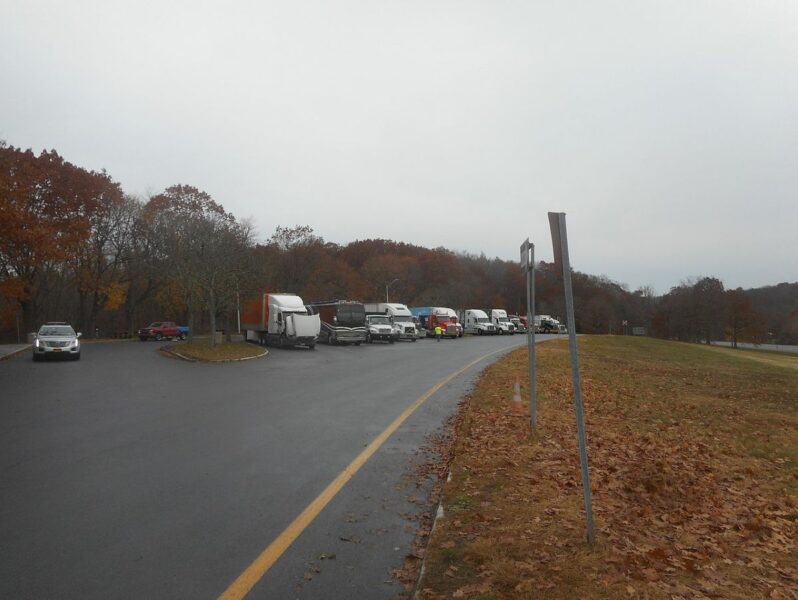 DanTD, Wikimedia Commons, CC BY-SA 4.0Trucks vie for 14 dedicated parking spaces at the Bedford Rest Area on southbound I-684 in Bedford, New York. (DanTD, Wikimedia Commons, CC BY-SA 4.0)
DanTD, Wikimedia Commons, CC BY-SA 4.0Trucks vie for 14 dedicated parking spaces at the Bedford Rest Area on southbound I-684 in Bedford, New York. (DanTD, Wikimedia Commons, CC BY-SA 4.0)
Successful Approaches
Several states have promising initiatives underway to address the parking situation. For example, the I-10 Corridor Coalition, comprising California, Arizona, New Mexico, and Texas DOTs, is implementing a multistate truck-parking availability system funded in part by FHWA’s Advanced Transportation and Congestion Management Technologies Deployment Program. Florida is installing a Truck Parking Availability System along several interstate freight corridors, while Colorado has undertaken a comprehensive truck parking information strategy that includes a Truck Parking Information Management System on 1-70 East.
Recognizing that several state transportation agencies were realizing successes in addressing truck parking needs, the National Cooperative Highway Research Program’s (NCHRP’s) U.S. Domestic Scan Program assembled a team of subject matter experts from several state DOTs and FHWA to identify other successful and emerging systems and technologies. In addition to finding ways to fast-track implementation elsewhere, the scan team was charged with documenting the following:
- The agencies’ process and successful strategy for developing a truck parking information system;
- Technologies that might be candidates to support sharing information on parking availability, (e.g., alerting truckers to available parking in advance of a rest area or truck stop); and
- Case studies of systems that may be transferable to other agencies.
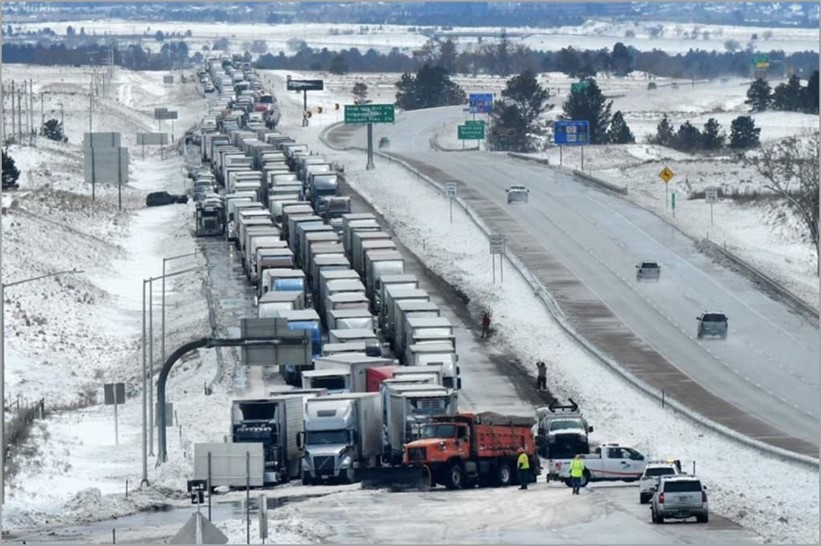 Courtesy of Colorado DOT
Courtesy of Colorado DOTThe team also focused on and presented suggestions on potential strategies for addressing issues such as identification of parking availability, overcoming legal barriers, and potential funding mechanisms. Based on discussions with agencies having success in addressing truck parking needs, the scan team determined that state DOTs could choose one of the following three paths:
- Initiate a truck parking management system on their own;
- Band together with surrounding states, and take a corridor approach to implementing a truck parking management system; or
- Address the parking issue, ideally with the assistance of a metropolitan planning organization (MPO) or other group affiliated or associated with the freight motor carrier industry.
Details on each path follow.
Single-State Truck Parking Management Systems
Addressing the truck parking issue as a single state or agency avoids the complexities of multistate or multiagency compacts. Funding required to develop solutions is controlled by one entity, and solutions can be delivered faster without the need for consensus across several jurisdictions.
State agencies that have initiated their own truck parking management system have several common attributes, including strong senior management support and leadership involvement. These agencies also tackle transportation issues in an interdisciplinary fashion (Figure 1), have an engaged and supportive freight motor carrier industry, and recognize that taking a regional approach can slow the ability to arrive at a solution. The chief executives’ vision for these systems not only recognizes the economic value that a thriving motor freight industry provides for their state but also understands the connection between safety and truck parking.
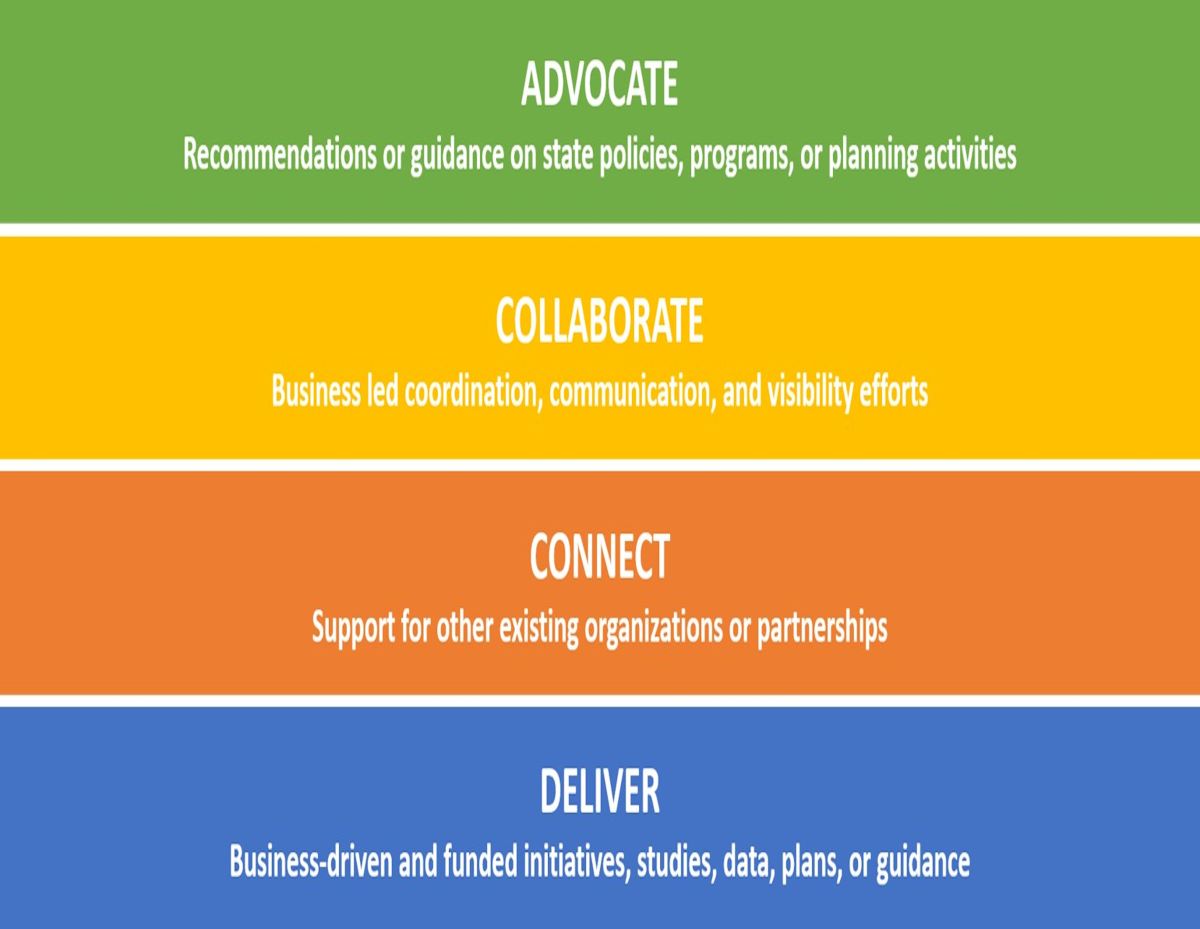
Focusing on the safety benefits of truck parking management systems is one way to engage and energize state DOT staff members, who generally believe that safety is inherent to their jobs. Identifying the economic benefits can further galvanize the staff. They understand that a positive return on investment helps to ensure continued financial support from the legislative bodies, which largely control and allocate the state DOT’s budget. Agencies that have chief executives committed to addressing their jurisdiction’s truck parking issues also have senior staff aligned with these beliefs. Thus, agency freight offices and staff are set up for success and supported with the resources needed to study the issue and develop a wide range of potential remedies.
In addition, other organizational resources such as a state DOT’s safety, traffic operations, and maintenance groups should each be aligned with the agency’s freight office to focus on the truck parking issue. These interdisciplinary teams can assess the problem from many sides and have diverse viewpoints when evaluating solutions. Their contributions range from the routine—such as whether an existing safety rest area has the required geometry to support truck turning movements—to understanding what types of sensing equipment needed to detect vacant parking spaces are compatible with the department’s computer systems, power sources, and other technology currently deployed on highways, as well as the support needed to purchase and maintain that equipment.
The freight offices of these successful agencies also are engaged with private-sector partners, including from the motor carrier and truck parking industries. This group of stakeholders often takes on a freight advisory council role by providing the agency team with current truck data, such as fleet sizes, port volumes, and available parking at private sources.
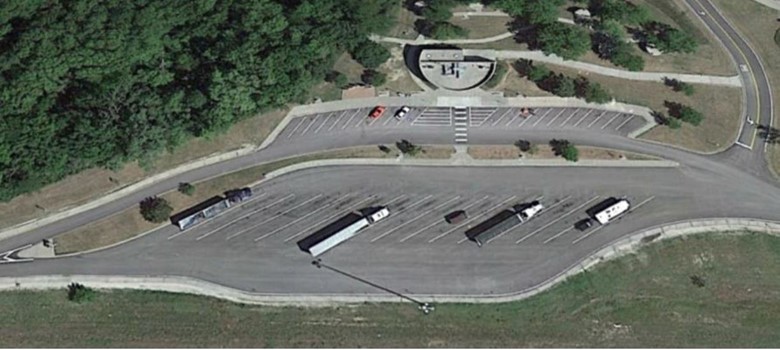 Courtesy of Kansas DOT
Courtesy of Kansas DOTKansas DOT undertook such an approach with its Kansas Truck Parking Information Management System. The system’s objective is to provide accurate, real-time information to the trucking industry regarding available parking at each of Kansas DOT’s 17 rest areas along I-70. The system uses computer-vision camera-detection software developed by the University of Minnesota to automatically post information on parking availability to roadside dynamic message signs (i.e., electronic signs with changeable text) and to websites. Kansas DOT set a goal of maintaining 85 percent accuracy in the number of available parking spaces at each location, which it achieved with accuracy levels of between 92 and 95 percent in most rest areas (3). Texas and Florida DOTs were also identified as leading states implementing this approach to address truck parking needs within their jurisdictions (Figure 2).
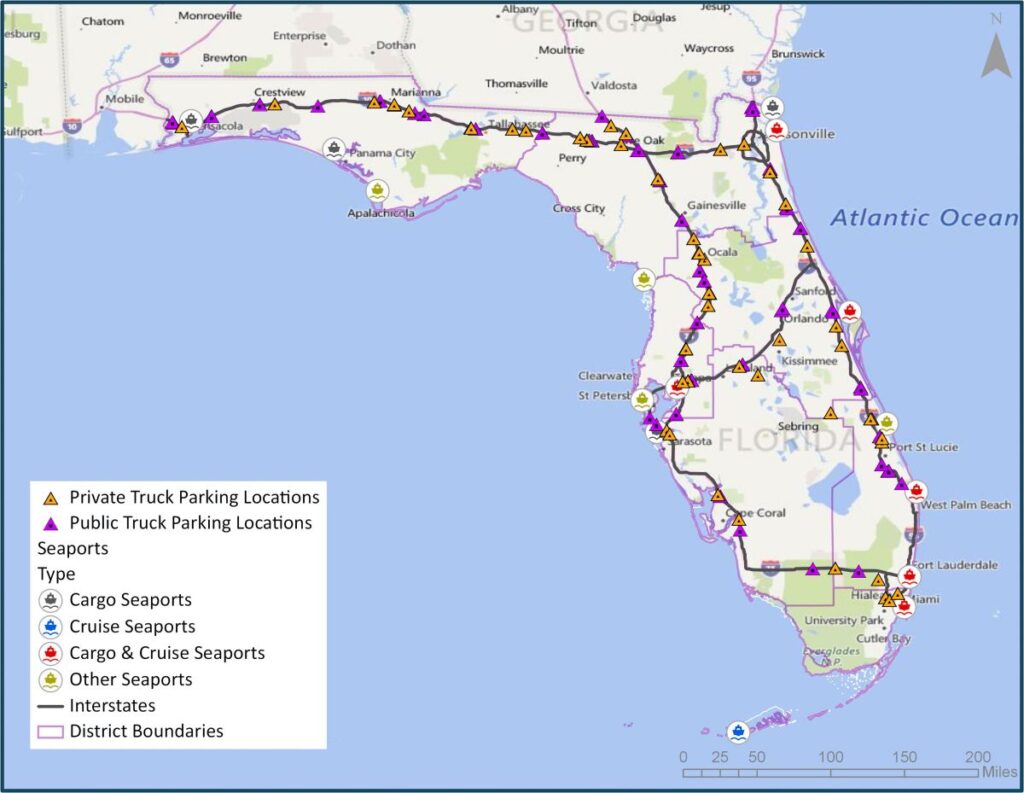
Multistate Truck Parking Management System
Many state transportation agencies that embark on a multistate approach to the truck parking issue may already have collaborations underway, a history of collectively addressing transportation issues, or an influx of cross-border development issues that cannot be addressed solely by home rule. The I-10 Corridor Coalition, in the southwestern portion of the United States, is an example of a group of states that recognize the interstate highway is not only individually but also collectively important. The coalition’s goal is to promote transportation safety and efficiency for the movement of people and goods along the I-10 corridor by sharing knowledge and resources, jointly testing technology, and coordinating the implementation of innovative transportation improvements and best practices. To address the truck parking issue, the coalition formed a truck parking working group, which was awarded a U.S. Department of Transportation (U.S. DOT) grant to implement a Truck Parking Availability System. The coalition’s four state DOTs are matching the federal grant dollar for dollar to maximize the funding. As planned, the system will detect, monitor, and provide real-time truck parking availability through dynamic message signs, smartphone and other in-cab applications, and traveler information websites.
Another example of a multistate collaboration is in the central portion of the United States, where the Mid America Association of State Transportation Officials (MAASTO) developed a Truck Parking Information Management System (TPIMS) by building on their regional network and securing a U.S. DOT TIGER (Transportation Investment Generating Economic Recovery) grant. The grant then was matched by the 10 MAASTO member state DOTs: Illinois, Indiana, Iowa, Kansas, Kentucky, Michigan, Minnesota, Missouri, Ohio, and Wisconsin. Launched in 2018, this regional TPIMS assists truck drivers in finding safe and convenient parking areas through a variety of means, including dynamic message signs, smartphone applications, and traveler information websites that are linked to real-time sensing technologies at public and private truck parking areas.
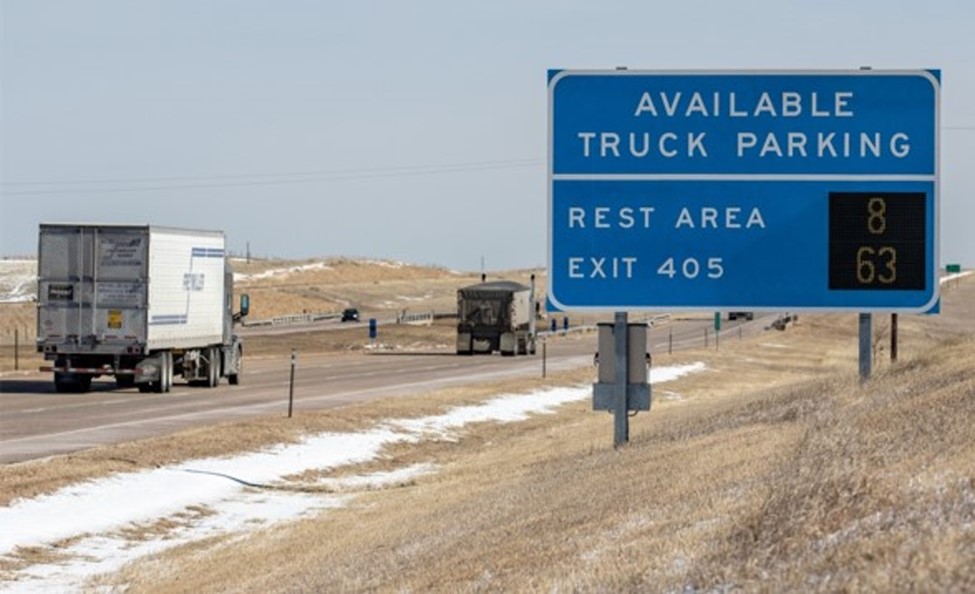 Courtesy of Colorado DOT
Courtesy of Colorado DOTAnother multistate effort is taking shape along the East Coast. The Eastern Transportation Coalition, a partnership of 19 states and the District of Columbia formerly known as the I-95 Corridor Coalition, has a Truck Parking Working Group that is looking at ways to expand parking capacity by identifying design options, distributing information, and providing outreach and education on this topic. The regional or multistate approach requires a certain amount of standardization, and one state DOT must be willing to lead the group. However, many decisions remain the domain of each state DOT, including determining the technology used to collect parking data, the location of truck parking areas, and the methods to construct and maintain them. It is, therefore, important for all partners to have strong advocates for truck parking.
The regional or multistate approach provides a one-stop shop for the freight industry and allows state DOTs to address truck parking from an origin and destination perspective, as well as a corridor perspective. It also increases the efficient use of truck drivers’ limited hours of operation, since they spend less time searching for parking. The scan team observed that several states had already started developing a truck parking notification system on their own. By joining their neighboring states, they could share lessons learned and recognize economies of scale and other benefits.
Engaging Stakeholders
Many state DOTs are trying to comprehensively study the problem and identify a range of solutions. An excellent resource is FHWA’s National Coalition on Truck Parking. Additionally, with the enactment of the Intermodal Surface Transportation Efficiency Act of 1991, FHWA has required MPOs to be integrated into state DOT project planning and programming processes. This creates an additional resource when examining truck parking issues.
MPOs traditionally assess regional economic needs, specifically freight needs, in a more substantive and focused effort than many state DOTs undertake. Many MPOs have studied freight industry issues and developed freight parking plans that may include mapping tools, communication strategies, and private-sector linkages. By engaging and collaborating with MPOs, state DOTs can leverage their respective MPOs’ knowledge of truck parking issues and understanding of local zoning issues, economic factors, and forecasted growth to develop truck parking solutions.
Corridor collaborations are another data-rich environment that state DOTs can use when performing truck parking studies and for identifying opportunities—public and private—to improve truck parking options. For instance, many corridor collaboration efforts include motorist information systems to alert drivers of travel times, active construction zones, and emergency and accident impacts along a highway corridor, regardless of state boundaries. This communication network can be readily expanded to include truck parking availability.
Public–Private Collaborations
Like state DOTs, private-sector organizations are keenly aware of the issues surrounding truck parking and actively engaged in identifying ways to improve capacity, as well as the real-time communication to truckers of parking availability. These private-sector organizations are willing to share their data with state DOTs and are often members of freight advisory councils or similarly named public–private collaborations at the agency. For instance, Minnesota DOT has done a significant amount of research on truck parking issues, which includes partnering with the American Transportation Research Institute—the American Trucking Associations’ research section—to assist in developing a useful, accurate truck parking information system.
Some private truck-stop chains have responded to the problem by creating reservation systems for truck parking, providing drivers with the certainty and reliability needed to plan safe and efficient trips with appropriate options to rest. Many state DOTs recognize that similar reservation systems could maximize the potential capacity and vastly improve the use of existing state-owned parking infrastructure by providing truck drivers with broader parking options. Since governments face different implementation challenges than the private sector does, a collaborative effort would let state DOTs develop strategies for instituting a public system that would benefit the trucking industry and highway safety nationwide.
Public truck-parking space detection and reservations through an online or app system may offer a potential solution. The technology already has been successfully implemented in other forms. Many state and local DOTs use reservations to manage demand, better utilize assets, and improve customer experiences. State parks and ferry systems use reservation systems with great success, while congestion management algorithms are used to adjust toll rates based on traffic volume. Several states recently retrofitted rest areas with intelligent transportation system technologies that detect and share truck parking occupancy information with truck drivers. However, no state DOT has been able to successfully combine and implement the detection- and reservation-system technologies for truck parking.
Key Components of Success
Across all these approaches to the truck parking issue, the scan team observed several attributes that factor in success. The first involves having champions—or invested individuals—across the agency. Their involvement is paramount to ensuring adequate support and resources for actions addressing truck parking.
Data-driven decision making is another attribute of a successful approach. Suggestions for agencies include performing a thorough study of truck parking issues affecting their jurisdictions—with coordination considered and performed beyond jurisdictional limits, if needed. Beyond the usual origin and destination information, the study ideally should feature an inventory of existing public and private truck parking spaces, identification of zoning and land-use constraints, average daily truck traffic counts, and other factors. However, for the study to be effective, it is critical to include an analysis showing the nexus between truck parking and safety—and between truck parking and the economy.
A key attribute of successful approaches is having a robust stakeholder engagement program to identify and develop truck parking solutions. Stakeholder engagement can take many forms, such as advisory committees made up of planners, representatives from the trucking industry, rail and port owners, and a broad spectrum of agency staff. Some state DOTs have their MPOs assist in stakeholder engagement, while others work with their respective corridor coalitions. No matter what the methods, such efforts optimally are continuous and include a media outreach element to raise public awareness.
Acknowledgment
The author thanks the members of Scan Team 20-02 for their tireless efforts and continued hard work that is the basis for this article and the project’s success.


